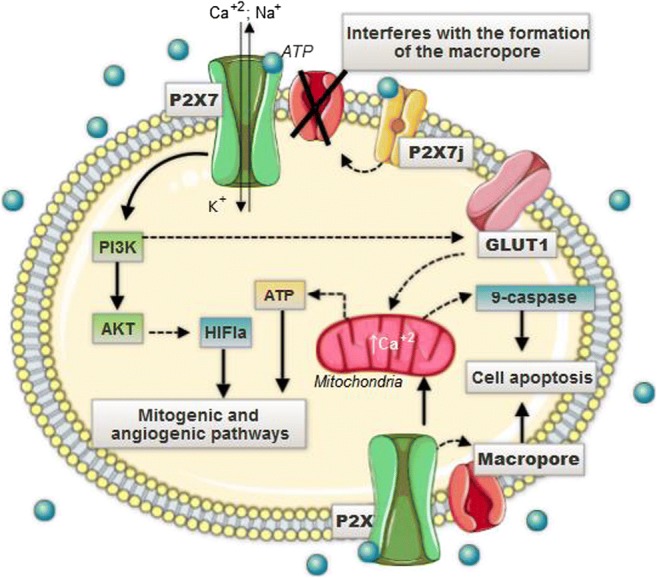Fig. 1.

The high concentration of extracellular ATP, characteristic of the microenvironment of CeCa, activates the P2X7 receptor, which triggers the increase of Ca2+ inflow. Nonetheless, situations in which the extracellular ATP interacts with the P2X7 for long periods cause the appearance of non-selective and irreversible pores that allow up to 900-Da molecules to pass through. The opening of such pores would collaborate for intracellular ionic deregulation and, consequently, for the apoptotic process. The influx of Ca2+ in these conditions would induce the activation of the mitochondrial caspases pathway, whose function is to conduct the apoptotic process, and the GLUT1 upregulation, related to the increase in oxidative phosphorylation and the consequent production of EROS. The result of these factors is, therefore, the increased ATP production, decreased pH, and, finally, cell apoptosis tumoral cervicals through immunosuppression generated by extracellular ATP and its activation with P2RX7. Cancerous cells of the uterine cervix, on the other hand, express a P2X7j variant that affects the formation of non-selective pores, decreasing cell permeability and cellular death, which facilitates the widespread proliferation of cells
